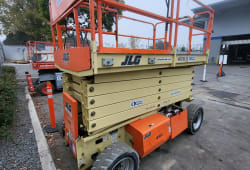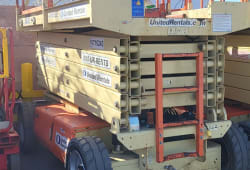Understanding Backcharging in Construction: What It Is & How to Avoid It
4 Lectura mínima
)
mayo 25, 2025
Backcharging is a common yet often misunderstood aspect of construction project management. Whether you're a general contractor or a subcontractor, understanding how back charges work-and how to avoid them-can help protect your bottom line and maintain strong working relationships. In this guide, we'll break down what backcharging is, why it happens, and how to manage or avoid it effectively on your construction projects.
What Is Backcharging?
Backcharging refers to the process where a general contractor charges a subcontractor for costs incurred due to the subcontractor’s actions or negligence. This could include damages, delays, cleanup, or rework. In construction, backcharging serves as a financial remedy for unanticipated expenses caused by another party.
For example, if a subcontractor damages installed drywall or fails to clean up their debris, the general contractor might hire someone else to fix or clean—and then deduct the cost from the subcontractor’s payment.
Common Reasons for Back Charging in Construction
:format(webp))
Understanding the reasons for back charges can help teams avoid them altogether. Some of the most common scenarios include:
Damage to Property or Materials: Tools dropped on finished flooring or mishandling of supplies.
Incomplete or Defective Work: Rework due to non-compliance with specs or codes.
Project Delays: Missed deadlines causing a domino effect.
Cleanup and Safety Violations: Leaving job sites messy or unsafe.
Equipment Misuse: Damaging rented or shared tools and machines.
These issues lead to unexpected costs, which contractors may seek to recover through a back charge.
Back Charge in Project Management: Contractual Considerations
From a project management standpoint, it’s crucial that backcharging clauses are clearly outlined in the contract. Contracts should:
Define what constitutes a valid back charge.
Outline procedures for notice and documentation.
Specify how costs will be calculated and deducted.
Without a contractual clause, backcharging can become a source of legal disputes. Always ensure both parties understand and agree to the terms before work begins.
How to Handle a Backcharge
:format(webp))
If you need to issue or respond to a backcharge, follow these steps to keep the process fair and professional:
Provide Written Notice: Inform the responsible party as soon as the issue arises.
Document Everything: Take photos, log communications, and collect receipts.
Allow Opportunity to Correct: In some cases, offer the subcontractor a chance to remedy the issue.
Be Transparent with Costs: Break down the cost of the backcharged work or repairs.
Deduct Fairly: Ensure deductions align with actual costs and contract terms.
Avoiding Back Charging in Construction
While backcharging is sometimes unavoidable, you can minimize it with proactive planning and management:
Set Clear Expectations: Define responsibilities in the contract.
Conduct Regular Inspections: Spot issues early before they become expensive.
Foster Communication: Keep subcontractors in the loop and address concerns quickly.
Use Project Management Software: Track progress, documents, and changes in real time.
Train Teams: Educate workers about common backcharge causes and how to prevent them.
Backcharging vs. Liquidated Damages
While both serve as financial consequences in construction, they differ in intent:
Backcharges recover direct costs incurred from specific actions or negligence.
Liquidated Damages are pre-agreed penalties for failing to meet contract timelines or deliverables.
Understanding the distinction helps with correct contract structuring and enforcement.
Real-World Example
Imagine a subcontractor fails to cover newly installed windows during an unexpected storm, resulting in water damage. The general contractor hires a cleanup crew and replaces damaged drywall, then issues a backcharge to recover these expenses. By documenting the damage and referencing the contract clause, the situation is resolved without legal conflict.
Conclusion
Backcharging in construction is a powerful tool-but one that must be used correctly. Knowing when and how to issue a backcharge, and more importantly, how to avoid them, can lead to smoother projects and stronger relationships. By setting clear expectations, keeping thorough documentation, and prioritizing communication, you can reduce the risk of costly disputes and keep your projects on track.
FAQs
What is a backcharge in project management? A backcharge is a deduction made by one party (usually a general contractor) to recover costs caused by another party's errors or omissions.
Can you issue a backcharge without a contract clause? It’s risky. Backcharges are much easier to enforce when explicitly stated in the contract.
How can you avoid backcharging in construction? Clear communication, well-defined responsibilities, regular inspections, and using management software all help prevent the need for backcharges.
Is a backcharge the same as a penalty? No. A backcharge covers actual costs; penalties like liquidated damages are predetermined amounts.

Caleb Woods is an experienced content specialist and an editor at Boom & Bucket, blending his journalism background with expertise in the heavy equipment industry. He delivers engaging, informative content to help professionals stay informed and make smarter decisions in the machinery market.














